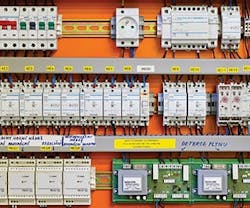Emerging Technologies for Energy Efficiency
LEDs, variable air volume, direct digital controls and building automation systems – these were all once cutting-edge technologies on the market but have now become established strategies. Curious what devices and capabilities might help you achieve energy efficiency in the future? The Department of Energy recently released its 2015 Quadrennial Technology Review (QTR), which assesses the status of existing technologies that can reduce energy.
The report notes that building energy use could be cut more than 20% by 2030 using technologies known to be cost effective. But if research goals are met to improve the efficiency of these measures, over 35% savings are possible despite forecasted growth in population and business activity.
For common equipment such as HVAC, lighting and plug loads, there remain many opportunities to increase the performance of individual components, as well as the way they are controlled as part of an integrated building system. Technologies that could lead to wide-spread adoption include:
- High-efficiency heat pumps that reduce or eliminate the use of GHG-emitting refrigerants
- Thin insulating materials
- Windows and building surfaces with tunable optical properties
- High efficiency lighting devices, including improved green LEDs, phosphors and quantum dots
- Improved software for optimizing building design and operation
- Energy harvesting sensors and controls
- Interoperable building communication systems and optimized control strategies
As more than half of all commercial buildings in operation today were built before 1970, these technologies can all be used in retrofit applications. As an additional benefit, these measures can also improve air quality, thermal comfort and productivity.
The findings conclude that “capturing potential future savings will require market-focused programs that encourage rapid adoption of efficient technologies, including credible information, standards, labels and other policies that help consumers understand the costs and benefits of energy purchasing decisions.”
